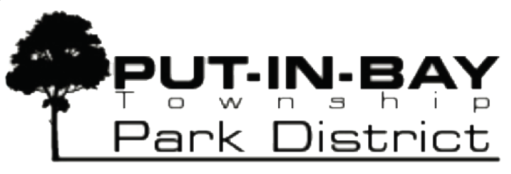Scheeff and Middle Bass Island East Point Preserve
by Neal Hess
With the help of multiple funding agencies, the Put-in-Bay Township Park District is well underway with our largest and most ambitious habitat restoration project yet. As you may be aware, our Scheeff East Point Preserve on South Bass Island and the East Point Preserve on Middle Bass Island have both been experiencing severe coastal erosion over the past several years, which has been exacerbated by high Lake Erie water levels. The erosion has resulted in the loss of several feet of shoreline, numerous trees that have washed into the Lake, and the need to reroute portions of our trail at the Scheeff East Point Preserve. Similar erosion and loss of land issues are being experienced by landowners throughout the Islands and coastal Great Lakes.
The Park District is currently mid-way through the engineering and design process to address these coastal erosion issues using “Living Shoreline”, natural restoration and shoreline stabilization techniques. Funding from three different grants is being used to complete the engineering and design work: a National Coastal Resilience Fund grant from the National Fish and Wildlife Foundation (NFWF) in partnership with the National Oceanic and Atmospheric Administration (NOAA), a Clean Ohio Conservation Fund grant administered by the Ohio Public Works Commission (OPWC), and an Emergency Erosion Assistance Grant from the Ohio Department of Natural Resources (ODNR).
A portion of the ODNR Emergency Erosion Assistance Grant and the Clean Ohio Conservation Fund grant will also be used for the actual shoreline restoration work. Receipt of the ODNR Emergency Erosion Assistance Grant is the result of a close collaboration between the Park District and Put-in-Bay Township. The Township will be administering this grant and they received money from it to engineer and construct a permanent fix to the Middle Bass Island Deist Road severe flooding and erosion issues. The Park District is currently applying for additional funding through the NFWF Coastal Resilience Fund for the project and we are hopeful that we will be successful. It is our hope that construction can occur in late 2022.
The “Living Shoreline” restoration engineering plans call for the construction of low-profile, boulder sills near to the shore to dissipate wave energy, protect the restored shoreline, promote the development of backwater wetland features, and to provide submerged aquatic habitat for mussels and fish. Large trees that have fallen at and nearby the preserves will be used to create natural, wooden groin and rootwad features that will further protect and help to retain the natural beach infill material, while also improving nearshore aquatic and shoreline habitat. To restore the lost shoreline area, a large amount of natural beach material, consisting of a mixture of natural gravel, cobble and shell hash material, will be deposited and the area planted with a diversity of native vegetation, including wetland plants and native shrubs. Finally, a large amount of foreign debris, such as concrete and sheet metal, that was historically placed along the shoreline in a failed attempt at erosion prevention, will be removed.
If you have any with questions on these restoration plans, you can come to the next Put-in-Bay Township Park District meeting to be held on Wednesday, July 13, 2022 at 10:00am at the Put-in-Bay Town Hall. Monthly meetings are always on the second Wednesday of each month. Plans are below
We intend to provide frequent updates about this project within this newsletter and on our website. Our goal will be to use natural shoreline restoration features and materials that will not only protect our park shorelines from erosion, but which will also improve the nearshore aquatic and terrestrial habitat for the myriad migratory and year-round wildlife that utilize our preserves. Additionally, it is our hope that this project can be used to help influence and inform other coastal erosion control and shoreline restoration projects throughout the Western Basin of Lake Erie.
